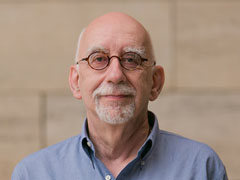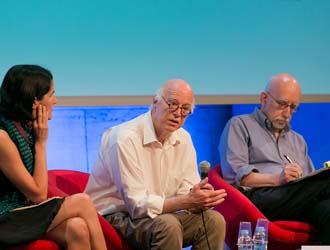The American political scientist, president of the Social Science Research Council and former president of the American Political Science Association (APSA), defines the characteristics of public space: localisation, expression, vicinity and democracy. He describes the New York subway as a space which condenses all these factors.
Shared Spaces recorded this interview with Ira Katznelson in July 2015 when he visited the Centre of Contemporary Culture of Barcelona to take part in the debate “What is a Decent City? Between Pragmatism and Utopia”. He spoke with Richard Sennett in the part of the cycle titled “The Possible City”, which was jointly organised on 2 and 3 July 2015 with the Social Science Research Council of New York. Other speakers in the cycle were Teresa Caldeira, Diane Davis and Richard Burdett.
Katznelson offers a highly didactic definition of what public space means to him, mentioning four fundamental variables. First is localisation, where people who are different from each other are able to come together. This is a place of expression because, here, people can show what they are like through their behaviour and appearance. It is also a zone of vicinity where individuals have to work out a way of being together in an interaction which combines keeping a distance and proximity. Finally, in terms of democracy, public space must offer equal access to everyone. For Katznelson, the main problem presented by public space is its restriction or insufficiency. He believes that there are now ever fewer places in which these fortuitous encounters, the essence of public space, can happen.
As for his favourite public space, Ira Katznelson speaks of the New York subway which has the particularity of being a “moving place” as well as impeccably presenting the characteristics he mentions in his definition of public space. He emphasizes interactions, vicinity, and the fact that it “makes the city permeable” as a robust, symbolic form of public interaction which reproduces the values of urbanism, especially diversity, plurality and tolerance.




